 Your new post is loading...
 Your new post is loading...
According to Wordstream, over 50 million businesses use Facebook Business Pages with 2 million of them using Facebook for advertising in the US (2016). Instagram, on the other hand, earns $595 million in mobile ad revenue per year. These stats just show the huge potential of social media marketing and its impact on increasing sales. Most marketers just lack understanding on how to achieve positive results. Social media helps build brand awareness and engage their audience outside of their company website. Data shows that more than 56% of online adults using more than one social media platform. Thus, the competition to gain the attention of the audience is hard. According to Social Media Examiner’s 2016 Industry Report, “40% of marketers say social media marketing has gotten more difficult for them in the last 12 months.” Despite the tough competition for attention, a huge audience pool is there just waiting to be wowed. Studies suggest that 59% of Americans with social media accounts think that customer service through social media has made it easier to get questions answered and issues resolved. People will follow your brand when they “like” what you offer. These may come in the form of discounts and special promotions, entertaining content, or customer service. People will follow your brand when they “like” what you offer. Here are 7 Brand Management tips to help you along the way....
Via janlgordon
In 2015, there was a marked increase in the popularity of brand videos on YouTube. In 2016, brands took social video storytelling to another level, not only on YouTube, but on Facebook and Instagram as well, and were rewarded for their efforts.
That’s according to social media analytics company Unmetric, which tracked social campaigns throughout the year as it did in 2015 to determine which ones performed best in terms of engagement.
"Videos have moved from being just reposts of 30-second TV spots to long-form storytelling, with the popular Nike Football post being nearly six minutes long," Unmetric CEO and co-founder Lux Narayan told Adweek. "This year really showed that there's an appetite and attention span for longer branded content if it's authentic and tells a story that resonates well with people, not merely as consumers but universally as humans."
Unmetric studies Twitter, Facebook and Instagram data to determine an engagement score for brand posts of zero to 1,000. The engagement score is a weighted measurement based on the idea that some metrics like shares and retweets have more value for brands than others such as likes and favorites. For YouTube, the company uses a different method for measuring the successfulness of a campaign. There is no engagement score, but likes and how quickly a video accumulates them are important factors. It also uses a combination of its own algorithms and human insights to determine overall engagement....
Millennials make up a crucial group of consumers.
Ad agency Moosylvania asked over 3,500 millennials — defined as 20 to 35-year-olds — to select their favorite brands over the past three years.
Great Questions, LLC helped rank the winning brands.
These brands are the ones that came out on top.
Some are surprising — others, not so much.
A common theme for successful brands? Engaging with millennial consumers via social media....
Today, you probably know Diet Coke for its silver and red branding—which is more or less how it’s looked since Coca-Cola’s sugar-free alternative first launched in 1982. But starting this month, in a market where diet soda sales are down, Diet Coke is going bespoke, as millions of unique designs are hitting U.S. shelves for the first time as part of a campaign called "It’s Mine."
So for the next several months, no two 12-ounce bottles of Diet Coke will look exactly alike.
"Personalization and customization is a huge trend, obviously," says Rafael Acevedo, group director of Diet Coke in North America. With Coca-Cola’s first major personalization campaign, Share a Coke in 2014, the company put thousands of people’s names onto bottles. The idea was that you’d spot someone’s name and want to buy them a Coke—and it’s an idea that worked, with measurable uptake in both short term sales and longer term brand loyalty. For Diet Coke, that concept got a tweak. "In this case, it’s more personal, "Acevedo says, "to have that sense that Diet Coke is giving you something no one else can have."...
Many (but not all) might argue that a tweet isn't nearly as powerful as a lightsaber. However, last week a number of brands joined the Star Wars frenzy on the platform, helping to churn out an impressively high number of tweets that could potentially populate a small planet.
Conversation on Twitter related to the newest movie was massive. According to Twitter, "Star Wars" was mentioned 6.5 million times in the week leading up to opening night, with 2.4 million of those happening in the final 24 hours.
The tweets, brand partnerships and overall collectively massive campaign paid off, with the movie breaking box office records on its opening weekend and taking in around $238 million.
Here's how five brands celebrated Star Wars: The Force Awakens.....
Value is in the eye of the beholder. But what influences the beholder in their perceptions? This infographic looks at the psychology behind our perceptions, noting trends, marketing practices and differing generational attitudes. Including: - How lobster went from prison food (at one time fetching $0.11/lb) to fine dining
- How ‘ancient grains’ got pricey
- How we experience more pleasure from a wine we’re told costs more
Since price positively influences perceptions of quality, and inversely influences perceptions of value, how do sellers of mundane products use history, story, exclusivity, and implied scarcity to change our appetites? Read on to find out a little more about the Perception of Value...
Why should we care about social selling? Isn't it just another one of those buzzwords used to describe something we already know about? Isn't it just sales under a different name? If that's true then why are we seeing organisations increasingly using new digital channels as part of their sales strategy?
Maybe it's because engaging with our audiences in new ways is just more exciting than traditional sales channels as it provides a way of interacting with our potential buyers. It's also because it's a lot cheaper, digital channels allow us to reach a wider audience, with the same resources. We're having a look at who is the most influential in this up and coming topic, and figure out what brands are driving most engagement on social media....
From the days of hand cut letterforms, through the wave of digital technology and into current day, logo design has wonderfully transformed, adapted and shape-shifted. What logo design trends lie ahead in 2015?Here are 10 predictions based on logo designs of recent times....
The correct visual use of your typefaces, color palette and images together is an imperative part of the brand development process. Branding is a specific trade, with devotion to the art of cohesion brought together by psychology and science. It doesn’t matter if your brand is a large-scale company or a part-time passion, the importance of branding consistency throughout your marketing can not be faulted.c
We give you some awesome insider tips to help you look at your brand a little differently, and potentially start creating your very own guidelines....
The brands that crush their competition are those who understanding that strategic branding goes much deeper than pretty visuals and responsive code. Branding is layered, sculpted, and tested.
To create a layered, brilliant, and competition-killing brand, three things must align. - Understanding of your brand (internal beliefs and communications)
- Understanding of your best potential audience(s)
- Understanding and differentiating from your competition
Combined, these elements create brand magic. To see these three things in action, keep on reading. Below I’ve curated some brilliant companies that are great at differentiating themselves from their competition....
2013 was full of key media milestones: The entry of successful entrepreneurs into the news business, the meteoric rise of BuzzFeed, and the re-emergence of long-form journalism.
We attended The Future of Media Conference at Stanford’s Graduate School of Business for the second year in a row to explore what’s happening in the media and what’s to come.The conference boasted a star-studded set of speakers, starting with media entrepreneur and explorer, Chas Edwards of Pop-Up Magazine and the much-awaited California Sunday, and closing with Todd Yellin, VP of Product Innovation at Netflix.
We share 10 takeaways from the day....
...Q: In your new book, Absolute Value: What Really Influences Customers in the Age of (Nearly) Perfect Information (HarperBusiness), you and co-author Emanuel Rosen say marketing needs a total overhaul. Can you explain?
A: For the first time in history, people can assess the absolute value of things they buy. User reviews, price comparison apps and other digital tools mean we can buy things based on almost perfect information, instead of irrational perception. So marketers need to understand what influences this shift in decision making...
As the industry’s fall conference schedule continues, those in attendance all seem to agree on one new reality: The definition of competitive advantage has changed. What advertisers, brands, marketers and tech innovators don’t agree on is how that advantage is achieved.
Some industry experts have replaced their dogged defense of a pre-set strategy with a more flexible course. Others have opted for a C-suite commitment to creating an agile social enterprise with an “always-on” listening and rapid response credo. Still others have developed a more hybrid solution that exists somewhere between a mission statement that is more consumer-centric but one without ample C+ leadership, budget or organization-wide execution. At the opposite extreme—which can lead to social intransigence— a C-suite paying “white knuckle” lip service to a loose customer listening strategy.
Thanks to social media, a new world order has taken charge. Brand ownership—indeed!—has changed hands to the consumer, creating a new competitive landscape wherein digital Darwinian “dis-order” (or as Brian Solis might say “disruption”) has turned the top-down corporate structure on its head. As a result, market share—even brand survival—depends now on organizational willingness to reverse engineer....
|
If you’re hoping to boost your online traffic with better ads, you may be asking yourself: what is web banner design? Web banner design focuses on the systematic creation of effective web banner ads through the careful application of basic design guidelines. Banner ads are one of the most prolific forms of marketing used in today’s online world. All companies use them in one form or another because they’re an affordable, measurable and effective medium to increase brand awareness. So how can you design and create web banner ads that will bring in those clicks? Below is a list of tips and general guidelines for designing banner ads....
The world might be a mess, but look on the bright side: Men’s shaving products are much better than they used to be.
Thanks to several online shaving start-ups, razors, creams, gels and other paraphernalia are now cheaper, of higher quality and more convenient to purchase than ever before. Last week one of the upstarts, Dollar Shave Club, was acquired by the consumer products giant Unilever for $1 billion. For shaving behemoths like Gillette, it is the first skirmish in the coming guerrilla war for men’s faces, not to mention other parts. (Dollar Shave also makes bathroom wipes for men.)
This column usually focuses on the technology industry, an area that sounds far removed from shaving. But the Dollar Shave acquisition signals something bigger than a mere improvement in shaving — it also underscores a consumer products revolution that would not have been possible without technology.
Hilarious online ads passed along social networks allowed Dollar Shave to create instant customer recognition — in other words, a brand — far more quickly, and for far less money, than a shaving company could have managed a decade ago. Online distribution allowed it to get products into consumers’ hands without a costly retail presence. In fact, by cutting out on retail, and shipping products to people’s homes on a subscription basis, the company made buying shaving products more convenient than going to a store....
In the era of Facebook and YouTube, brand building has become a vexing challenge. This is not how things were supposed to turn out. A decade ago most companies were heralding the arrival of a new golden age of branding. They hired creative agencies and armies of technologists to insert brands throughout the digital universe. Viral, buzz, memes, stickiness, and form factor became the lingua franca of branding. But despite all the hoopla, such efforts have had very little payoff.
As a central feature of their digital strategy, companies made huge bets on what is often called branded content. The thinking went like this: Social media would allow your company to leapfrog traditional media and forge relationships directly with customers. If you told them great stories and connected with them in real time, your brand would become a hub for a community of consumers. Businesses have invested billions pursuing this vision. Yet few brands have generated meaningful consumer interest online. In fact, social media seems to have made brands less significant. What has gone wrong?
To solve this puzzle, we need to remember that brands succeed when they break through in culture. And branding is a set of techniques designed to generate cultural relevance. Digital technologies have not only created potent new social networks but also dramatically altered how culture works. Digital crowds now serve as very effective and prolific innovators of culture—a phenomenon I call crowdculture. Crowdculture changes the rules of branding—which techniques work and which do not. If we understand crowdculture, then, we can figure out why branded-content strategies have fallen flat—and what alternative branding methods are empowered by social media....
As digital video and streaming services continue to recast the viewing landscape, a handful of digital executives and Sundance Film Festival attendees pushed to have the burgeoning videosphere represented during one of filmmaking's highest-profile events—and Rick Parkhill, CEO of VMA Media, made it happen.
After securing support from sponsors Twitter, Fullscreen, Maker, Zefr, Above Average, Hulu and Naritiv, he persuaded festival organizers that this was, in fact, a viable extension, and Digital Storytelling was born. The event kicks off Thursday, Jan. 21, on the eve of the film festival, with additional sponsors including CNN's Courageous content studio, Fox Network Group's True(x) and The Huffington Post signing on....
Today, if you’re in marketing to any extent, you’ll know about influencers and, more importantly, about influence marketing.
What makes a great influencer? Influencers are humans, clearly, not automated content management systems. They are mega-connected on social media (aka they have earned the trust of many other humans to deliver on what they promise) and they have the unique ability to inspire action. The good influencers out there have great knowledge in a particular field, know how to curate that knowledge, add their unique vision and value, and they know how to communicate with their audiences.
If I am a brand, I totally love that potential, that opportunity, that has only been created in the last few years. How can my brand become part of an influencer’s curated content (and in a positive light, hopefully!)....
“No other brand will make you feel so …” That’s the basis for a great brand promise – and very, very few brands deliver on it because they confuse operational excellence with promissory distinction. They promise great service or great features because they want the world to know they’re very good.
The thing is – the world already knows, or rather it assumes. That’s not a promise. It’s just a reassurance (and one that consumers increasingly take for granted). We keep thinking promises are made in words. They’re not. They’re captured in words for organisations’ convenience – and in phrases that marketers and senior teams feel good about but that, in reality, consumers are oblivious to....
Hand-picked collection of brand style guide examples, pattern libraries and design manuals for inspiration. Find all the best style guides in one place. Maintained by Saijo George, find me on Twitter or LinkedIn.
Great branding is more than a logo. It’s more than a list of acceptable fonts, too, or even some 100-page PDF containing everything from measurements on proper margins to deep verb-subject-adjective explorations on writing the proper "voice." Great branding is really the DNA of product or company, manifested through various media in ways that the public can recognize and understand.
With that in mind, above is a collection of our biggest branding stories of 2014. It’s not just a highlight reel of great branding. You’ll see some of that, of course, but you’ll also see some of the worst branding of 2014, too, along with essays on branding from some of the best names in the business....
Brand teams are quick to rebrand when they hit a rough patch. But they sometimes forget that a brand is more than a company name, logo, tagline, or ad creative. And that a shiny new brand identity won’t automatically solve all of the problems of the business.
The marketing world is littered with failed rebranding initiatives (from the Gap to Tropicana) that illustrate one simple truth about branding. A company doesn’t own a brand. It’s consumers do. Giving a brand a new coat of paint (or dressing it in sheep's clothing) won’t change consumers feelings and expectations of a brand....
As opportunities for dynamic dialogue between business and consumer have multiplied exponentially, organizations are pushing to find ways to engage and elevate their associative value. Brands that get it right go beyond appealing to material needs; they transcend the superficial back-and-forth to engage with audiences not just around what people seek in a material sense, but on a deeper and more personal level....
Seth Godin wrote, “A brand’s value is merely the sum total of how much extra people will pay, or how often they choose, the expectations, memories, stories and relationships of one brand over the alternatives.”After all, there are brands we as consumers absolutely love. And there are brands we as consumers can’t stand.So what’s the difference between those we admire versus the ones we despise? And is there something we do to monitor the course our brand is taking in this battle between love and hate?...
What is the 'best' consumer brand of 2013? Depends how you measure it....
The research reports that being perceived as a simpler brand results in higher customer retention and recommendation rates. 75% of people said when they perceived a brand to be simple, they would recommend that brand to family and friends.
The report also argues that customers are willing to pay a premium for simpler experiences with companies.
Providing simple, clear messages brands also create a better workplace for employees, encouraging innovation and creativity. Results showed 51.2% of respondents employed by ‘simple’ companies believe they are rewarded for being innovative, compared to just 6% at complex companies...
|



 Your new post is loading...
Your new post is loading...




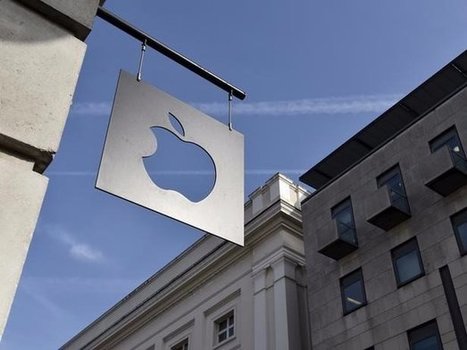

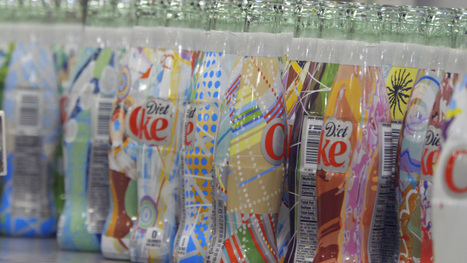
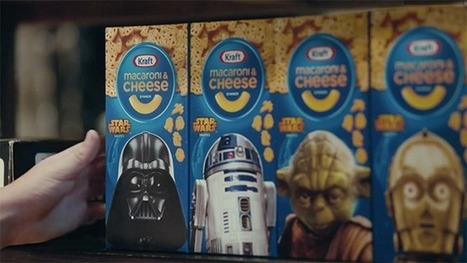
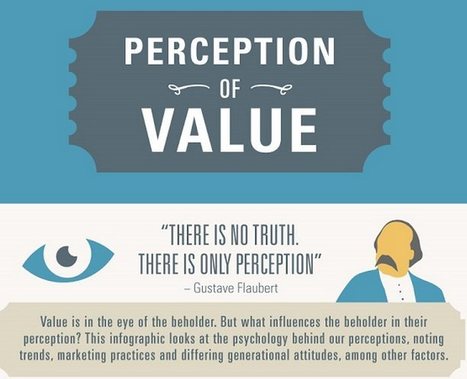
















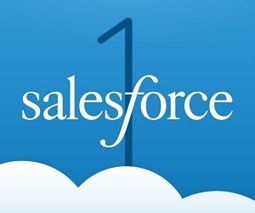
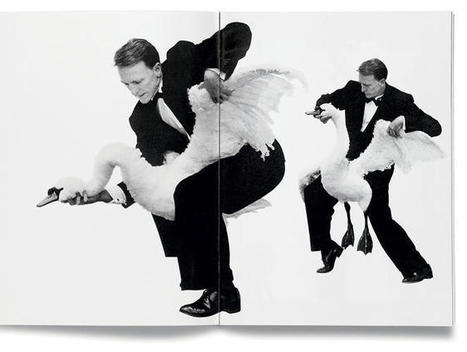
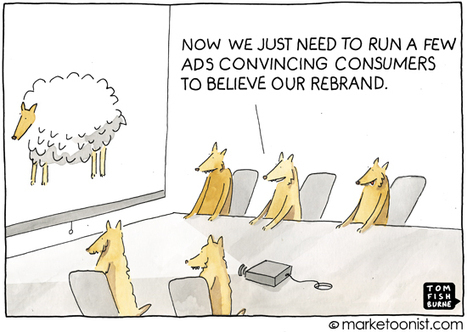













I selected this article from Curatti written by Farid Gasim because it provides information on how to build more brand awareness on social media.
The more likable you are by your audience the better chance you will increase visibility.
Win Favor With Your Social Media Community
Despite a lot of competition there is an audience in your niche just waiting to be "wowed" by your brand. I agree that adding value to their lives can help bring in more loyal followers.
Gasim goes over how to achieve favorable influence with your target market on social media.
Here's what caught my attention:
Selected by Jan Gordon for Curatti covering Curation, Social Business and Beyond
Image: Courtesy of 123rf.
Read full article here: http://ow.ly/NUp530brS37
Stay informed on trends, insights, what's happening in the digital world become a Curatti Insider today
Good post on what makes a brand shareable on social media